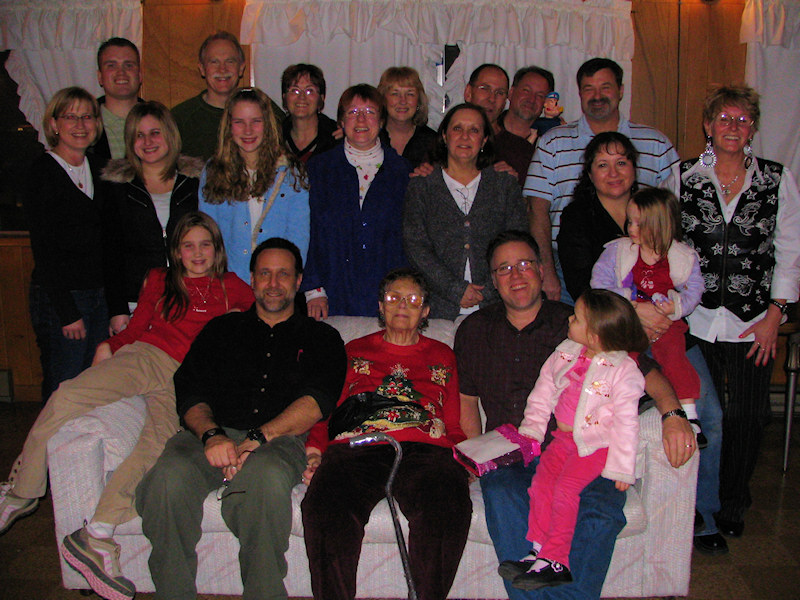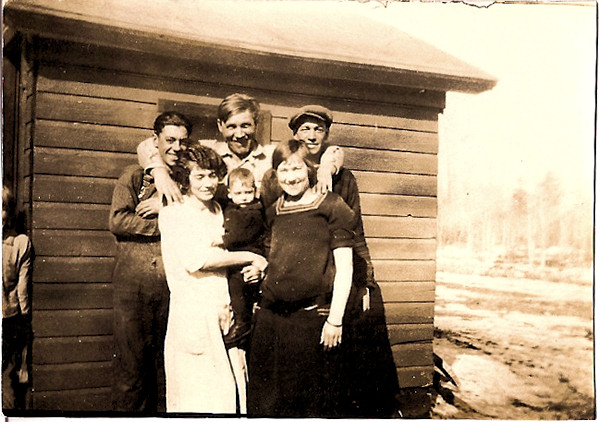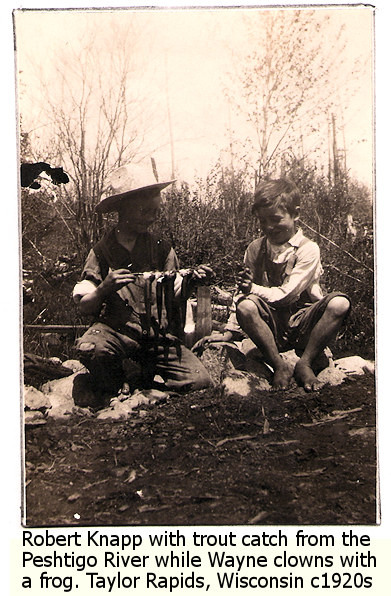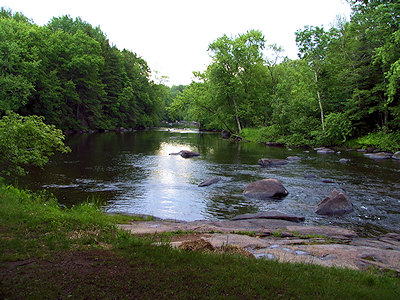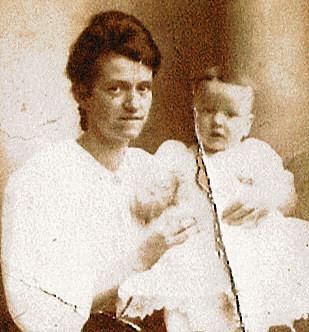I should be heading back home to my husband and cats, but instead, I’m leaving in a week for a drop-out-of-the-sky-decision to spend 10 days in Wisconsin researching my mother’s side of the family tree.
This was just decided yesterday, so I’m overwhelmed with the fact that I have to prepare to do a lot of research on a part of the family tree that has barely been explored. And I have less than a week to do it and we’re on a plane to Wisconsin.
I hope that by sharing with you some of the thoughts and actions I’m taking to prepare, you can tell me what I’m doing right or wrong, and I will figure some of this out for myself.
Narrowing the Focus
The first thing I need to do is narrow the focus of my family history research. I’ve narrowed it down to the eldest in the family tree, the harder to track down, and have got it narrowed to four family names: Anderson, Blichfeldt, Swendson/Svendsen, and Knapp.
The first three names, Anderson, Blichfeldt, and Swendson/Svendsen, came together in my family’s history through an amazing combination of life circumstances. I talk about it in the article on Searching For Grandfather Anderson, but here is a quick summary.
Hans Anderson arrived with his family as a child of 7 to the new world of America, taking up residence in Manitowoc, Wisconsin. In 1867, he married Sarah Olson, daughter of Ole Olson, and moved to South Dakota for a few years before returning with his family to Cicero, Wisconsin, in Outagamie County in 1875. He and Sarah had 11 children, six of whom died young. Among the remaining children, they had Johan (John) Christian Anderson and Gena Anderson.
John married Helena Blickfeldt, daughter of Frantz Henrick Blichfeldt and Mary McMahon, in Lessor Township, Shawano County, Wisconsin. Helena’s mother died in childbirth and she was adopted and raised by Christopher Swendson/Svendsen.
Gena Anderson married Christopher Svendson’s son, John Swendson, before 1896, also in Lessor Township, Wisconsin.
When Helena died of consumption (TB) in 1906, not long after the birth of her ninth child, John Anderson’s family was split up and distributed among family members. Some went to live with their paternal grandparents, Hans and Sarah Anderson, and others went to live with their mother’s adopted brother, John Swendson, and his wife, their aunt Gena (Jenny).
When Hans and Sarah were getting older and the challenge of raising the children was getting a bit much, they moved either in with or next to John and Gena, reuniting the Anderson children about 1914, where Hans and Sarah lived until their deaths.
The story of how these families mixed and mingled is one of the more fascinating stories in our family tree, so I’m eager to learn more about them, and their descendants.
The Knapp family, back three generations, is also on my map to explore. Nora Knapp married Raymond Anderson, one of the son’s of John and Helena Anderson, which led eventually to me. The Knapp family can trace it’s bloodline directly to Nicholas Knapp, a thoroughly researched family tree. But the more “modern Knapps” need a little more work.
My great Uncle Wayne P. Knapp wrote several books about his life growing up in Northern Wisconsin, so I’m eager to dig into the books and see if we can recreate the past as he saw it growing up, while standing on the same land 70-80 years later. We also have recently found stories written by his brother, Robert Knapp, about this childhood in Wisconsin as well as his life once they migrated to Oregon and Washington State. We have many photographs of the area, so I’m anxious to compare images as well as notes.
With these people as the focus, I now have to narrow things down to the specific things I need to find and see and photograph.
Mapping and Tracking
Now that I’ve narrowed my search to the specific people and names, I need to narrow my search to the specific places. The Master Genealogist (TMG) program is really helpful at printing out a variety of reports, including one that lists the places, which I can sort by county and town. This tells me the areas in which I need to start my geographical research.
From this information, we book our flight to Green Bay, Wisconsin, and end up with the airport in Appleton, Wisconsin, which puts us in Outagamie County and near neighboring Shawano County, areas where the Andersons, Blichfeldts, and Swendsens came together.
I begin with a list of the genealogical societies in the area as well as libraries, courthouses, and LDS Family History Centers in Wisconsin. Then I expand my list to include local museums and archives. I want to know who has what information so I can go through and figure out what information I need and then who has what I’m looking for.
In anticipation of getting birth, death, and marriage certificates, as well as land and probate records, I visit the Wisconsin Vital Records and Wisconsin Department of Health and Family Services – Genealogy Services sites for forms to print out in advance and information I need to schedule my visits and research.
I track down some plat maps of the historical areas and then use Yahoo and Google maps to trace what they look like today, with driving directions to help me get there.
I print out reams of paper to help me research and guide our family search, sorting it by family member and location.
One of the most valuable things I’ve done to prepare for this trip is to buy GenSmarts. It works as a stand alone and integrates with TMG to analyze your research data to determine what is missing and offers suggestions. The integration with TMG is fabulous as it allows me to quickly process specific data on a person or group of people to look for holes and make recommendations and then add that information directly to my task list in TMG. It isn’t perfect, and I’ll have a better review on it soon, but it well worth the money. It has found holes in my research that I didn’t even know were there!
I have a lot of work to do to prepare, and a lot of work to do upon arrival, but with the help of new friends and family, I’m really looking forward to this trip with my mother. I’ll keep you informed on our progress. And any help you can offer, I’ll gladly accept!

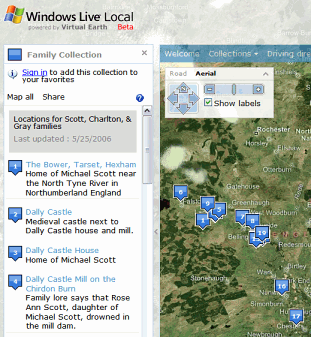 A tip from
A tip from  Google News Alerts are the easiest to use. Simply type in your keywords such as names or places, and select if you would like the emailed search results to include only news, only web, or a combination of both, or mentions from Google Groups. Then choose how often you would like to receive the information in your email inbox, and provide your email address. That’s it. Nothing to enter, login or mess around with.
Google News Alerts are the easiest to use. Simply type in your keywords such as names or places, and select if you would like the emailed search results to include only news, only web, or a combination of both, or mentions from Google Groups. Then choose how often you would like to receive the information in your email inbox, and provide your email address. That’s it. Nothing to enter, login or mess around with.
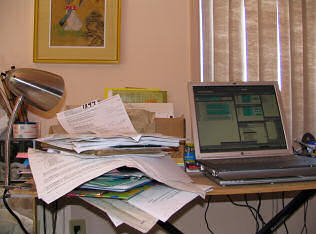 Then my mother got into this with a vengeance. When she gets “into” something, she gets very seriously into it.
Then my mother got into this with a vengeance. When she gets “into” something, she gets very seriously into it.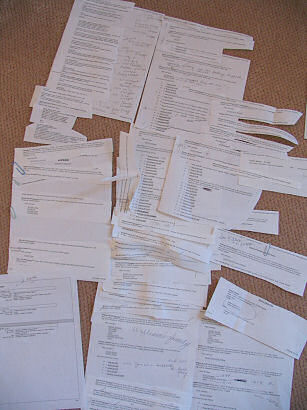 One night she came down late with a long trailing ribbon of papers. I thought it was an art project. I wish it was.
One night she came down late with a long trailing ribbon of papers. I thought it was an art project. I wish it was.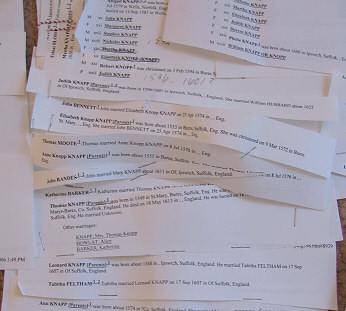 The ribbons of papers all neatly but chaotically stapled together flittered in the absent breeze with a life of their own. At midnight, this is just the kind of haunting artistic genealogical display you want to see.
The ribbons of papers all neatly but chaotically stapled together flittered in the absent breeze with a life of their own. At midnight, this is just the kind of haunting artistic genealogical display you want to see.